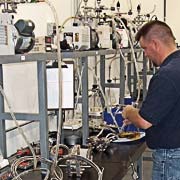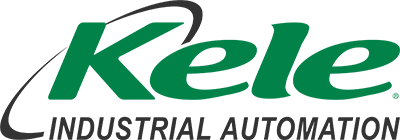Should you install chemical seals with your pressure gauges, switches, or transmitters?
- Where the process medium would corrode the instrument connection and pressure sensing element. Chemical "attacks" cause costly instrument failures and unscheduled downtime.
- Where the process medium contains suspended solids or is viscous enough to clog the instrument connection and the pressure sensing element. Blocked pressure ports prevent accurate measurement.
- Where the process medium might freeze or solidify in the instrument connection and sensing element due to temperature changes. Solid media can block pressure ports, preventing accurate measurement, or distort the diaphragm of your measuring instrument.
- Where changing process medium requires flushing the system to prevent contamination.
- Where the process application requires sanitary connections. Most measuring instruments cannot meet 3A sanitary standards due to crevices inherent to their design. Or they can’t withstand the temperature requirements of steam cleaning. A diaphragm seal provides a sanitary connection and allows easy cleaning between batches.
- Where your measuring instrument has to be remote mounted to protect it from high ambient temperatures, vibration, harsh environments, or accessibility problems. A diaphragm seal ensures reliable and accurate pressure measurements.
What Do You Need to Know to Pick the Right Chemical Seal?
- Mounting Type
Your options include threaded (NPT), flange attached, pancake mounting between two flanges, weld attached and sanitary clamp attached.
- Material Compatibility
The proper selection of wetted parts ensures the application compatibility of your diaphragm seal. Consider all chemicals the seal will be exposed to during service. You’ll pick the seal material that will best stand up to corrosion, pitting, stress cracking, embrittlement, and hydrogen permeation. If you have an extremely caustic media, look at an all-Teflon insert, flange attached seal or a pancake-style ring seal. By using elastomers, you can drastically reduce seal cost and maintenance.
- Process Working Pressures
This is important for extremely low or high pressures. Between 100 and 1000 PSI, almost any seal will suit. It is best to use elastomer seals for low pressure so the diaphragm will flex enough to transmit the pressure to your instrument. For high pressures, it is best to use a metal diaphragm. In most applications, they will last longer.
- Process Temperatures
In order to transmit the process pressure through the seal to the sensing instrument, you must fill the sensor with a fill fluid. All fill fluids have different stable operating temperature ranges. If you exceed the fluids’ temperature limits, they can boil and destroy the seal, the instrument, or both.
Application Fill Fluid Suitable Temperature for
Pressures < 15 PSISuitable Temperature for
Pressures > 15 PSIGeneral service Silicone oil DC 200/50 -4° to 250° F -4° to 392° F Silicone oil DC 200/10 -40° to 250° F -40° to 400° F Low temperature Silicone Oil (4 cSt) -130° to 176° F -130° to 356° F High temperature/
High vacuumHigh-temperature oil
(All threads welded during assembly)4° to 392° F -4° to 750° F
(14° to 750° F with transmitters)Oxygen/Chlorine service Halocarbon 6.3 -40° to 176° F -40° to 347° F Fluorolube FS-5 — -40° to 392° F Food and beverage Glycerine * — 60° to 462° F Glycerine/Water * — 14° to 248° F Mineral Oil -40° to 338° F -4° to 482° F Food-Grade Silicone Oil — 0° to 572° F Neobee M20 -10° to 200° F -10° to 400° F * Not suited for vacuum/compound ranges
Each type of fill has a specific use and can dramatically change the cost to fill the instrument and seal. If your application is not compatible with our general DC-200 silicone, please call 1 (800) 9-LESMAN for assistance.
- Attachment to Compatible Instruments
Each seal has a different volumetric displacement or sensitivity. If the displacement of the seal is less than that of the sensing instrument, they will not work. Seal displacement MUST be greater than that of the instrument.
Need a custom seal assembly?
Trained factory technicians use special equipment to avoid damaging gauge and seal components during assembly and testing. Fill out our quick form for assistance in selecting the right combination of instrument, seal, and fill fluid to suit your application.





